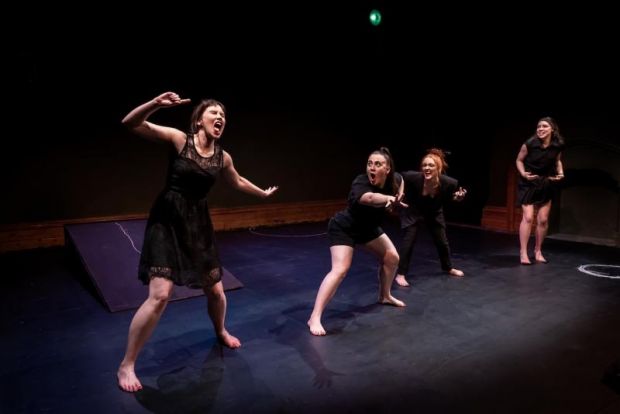Stevie
Stevie presents an account of a person’s efforts to integrate the difficult experiences of childhood trauma and its subsequent impacts. Stevie is disciplined, tightly imagined, engaging and poetic. This gives the play a very solid base for exploring chaotic and disordered material.
Four people are left waiting for Stevie, although it is a reluctantly understood open secret that Stevie has committed suicide. The four characters initially seem to be antagonistic, possessive friends of Stevie joined only by their common activity of waiting for Stevie. As the play grows, it is also possible to interpret them as aspects of Stevie’s interior life. Each character’s story is threaded though the play and their memories, questions and obsessions are interspersed with episodes of tightly synchronised stylised movement and voices presenting childhood memories, imaginings, games and terrors. Some of the work is full of verbal and physical distress and at other times there is questioning, stillness and silence. This balance invites the audience to understanding and engagement.

Stevie is set in a room with blackboard paint on walls and floor and chalk is used to create spaces and express ruminations. The actors are fully supported to create spaces and express emotions by imaginative sound and lighting designs.
The play ends gently with the possibility of trust, rest and openness.
Ruth Richter
Photographer: Darren Gill
Subscribe to our E-Newsletter, buy our latest print edition or find a Performing Arts book at Book Nook.

